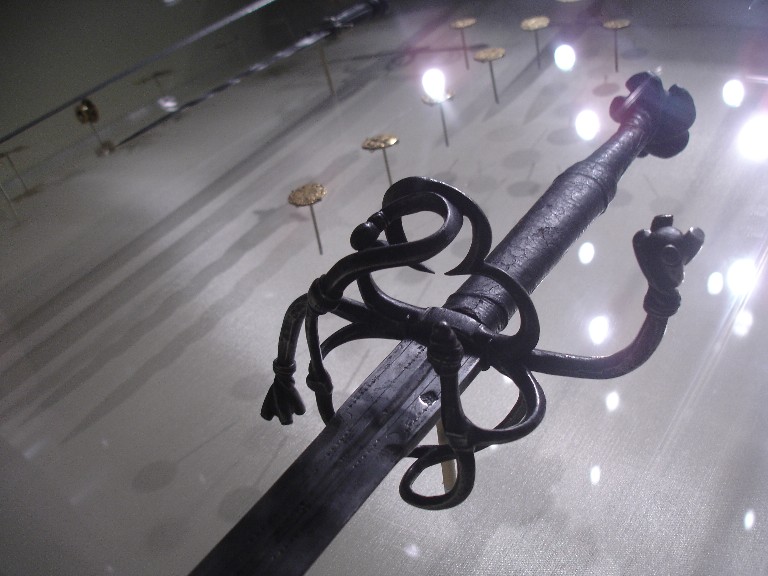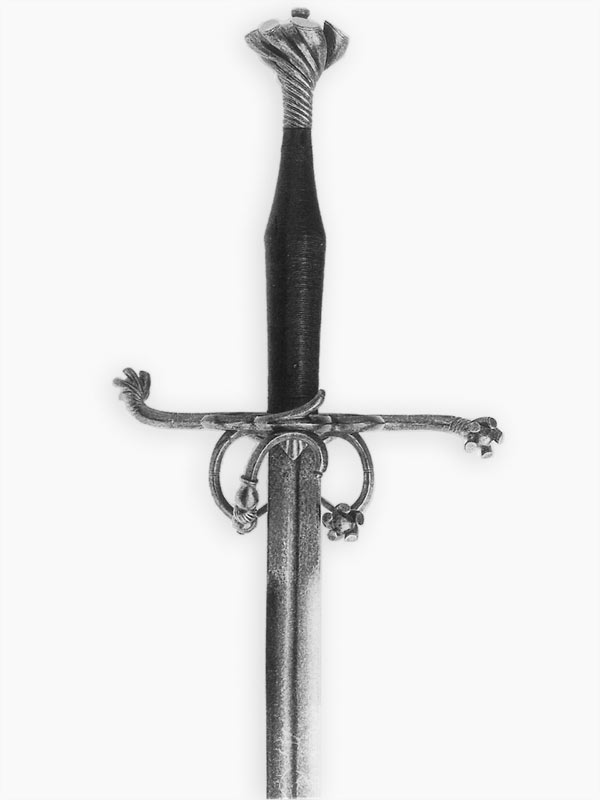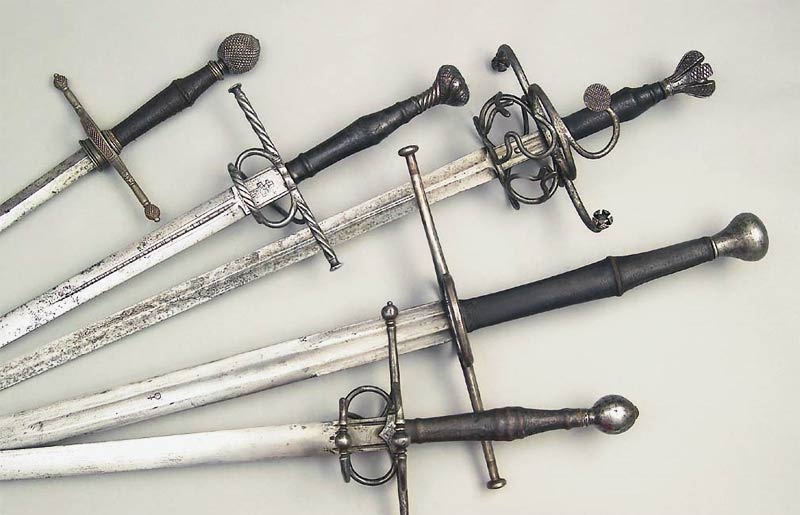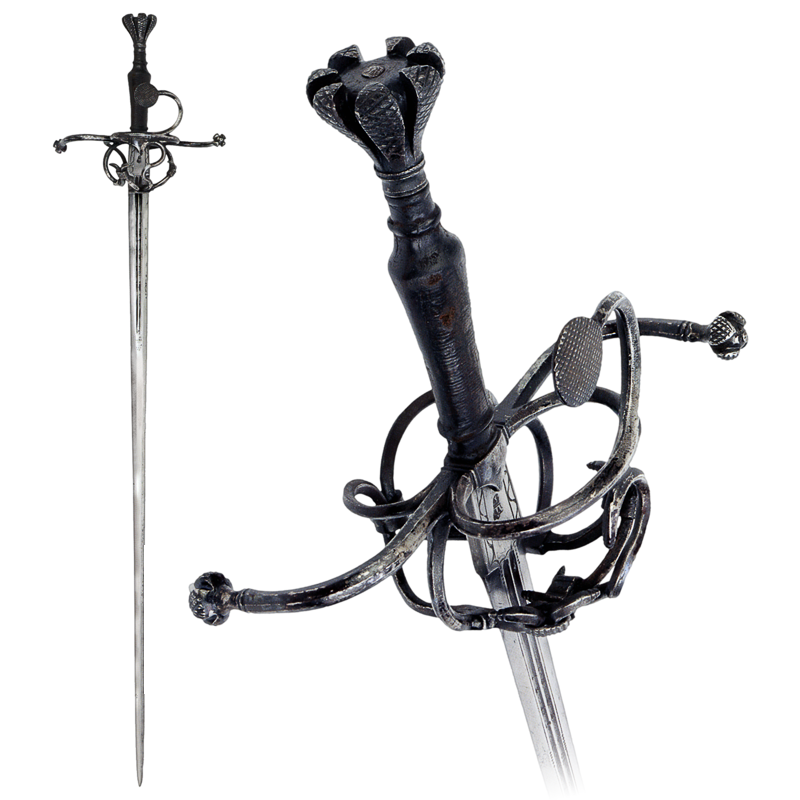[ Linked Image ]
One thing that stands out to me is that of hilt style C2. It shows a floating bar and plate that protects the "back of the hand" as shown in this enlarged image:
[ Linked Image ]
One interesting thing of note is that the arc of the guard goes the opposite direction that a knuckle-guard would go. That's an odd thing to me, but i guess it would be protective in the "plane of the cut" as it were.
I'm very intrigued by this this feature and ask if any of you could show examples of sword hilts that have this type of guard.
I'm attaching one as found at the Hessink's Auction House described as such:
A Fine German Hand-and-a-Half Sword, circa 1530.
Double-edged blade and a shallow grooves. Each side of the ricasso with stamped marks. Iron bar hilt with curved 'S'-shaped quillons and guard ring. Leather covered grip with central bulb, and spirally twisted iron pommel. Length 120 cm.
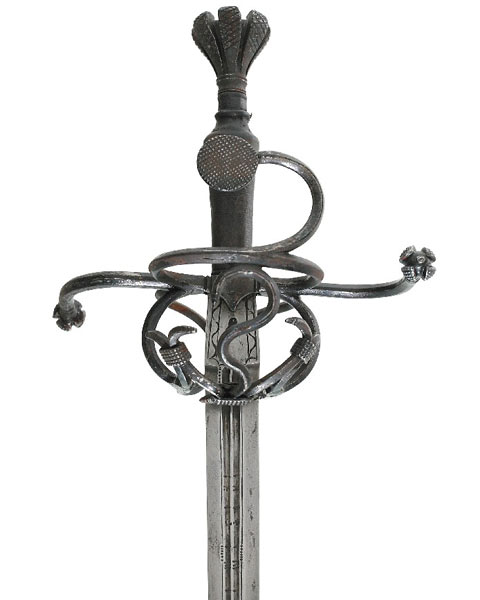
A Fine German Hand-and-a-Half Sword, circa 1530
Note the "back of the hand" protection
Copyright Hessink's Auction House
